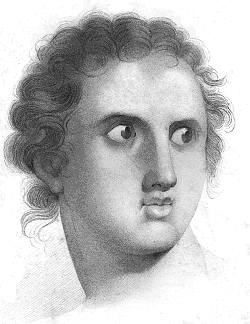Plate XL - Head of Achilles
|
Plate XL is an attempt to give a fac-simile of the
head of Achilles, traced on transparent paper upon the
original. The head of Briseis, which was also
beautiful, had unfortunately suffered from the fall of
a beam intended to preserve it. |
There is, no doubt, a certain degree of sameness even in the coloured originals - a defect which must be more visible in outline. The Romans only copied themselves and the Greeks ; therefore they had not that range over all ages and all situations which is open to modern art. The Greeks, who only depicted themselves, and an occasional Persian or Amazon, were still more confined as to models. The shading of a modern picture is generally artificially contrived by a light let in by a small window, or even a small hole in a shutter purposely closed, and which produces an effect rarely observed in nature. The ancients, on the contrary, seem to have preferred the light of day for their works, and one curious advantage is gained by it. The pictures of the ancients produce a pleasing effect when only surrounded by a simple line of red, while the very best of modern paintings is very much indebted to the carver and gilder for its gorgeous and burnished frame, without which its beauties are so much diminished that it almost ceases to be a decoration to an apartment.
